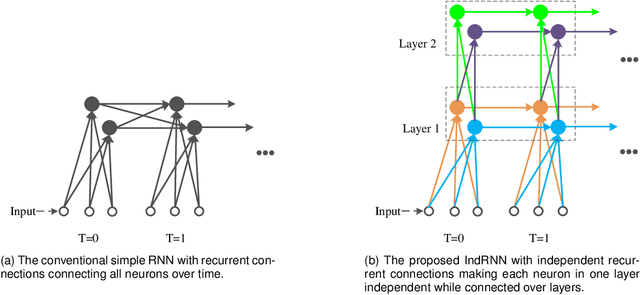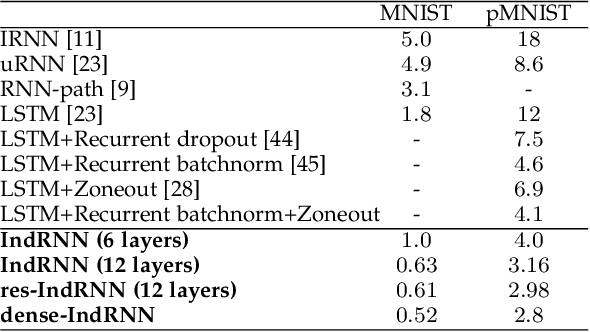Deep Independently Recurrent Neural Network (IndRNN)
Paper and Code
Oct 21, 2019



Recurrent neural networks (RNNs) are known to be difficult to train due to the gradient vanishing and exploding problems and thus difficult to learn long-term patterns. Long short-term memory (LSTM) was developed to address these problems, but the use of hyperbolic tangent and the sigmoid activation functions results in gradient decay over layers. Consequently, construction of an efficiently trainable deep RNN is challenging. Moreover, training of LSTM is very compute-intensive as the recurrent connection using matrix product is conducted at every time step. To address these problems, this paper proposes a new type of RNNs with the recurrent connection formulated as Hadamard product, referred to as independently recurrent neural network (IndRNN), where neurons in the same layer are independent of each other and connected across layers. The gradient vanishing and exploding problems are solved in IndRNN by simply regulating the recurrent weights, and thus long-term dependencies can be learned. Moreover, an IndRNN can work with non-saturated activation functions such as ReLU and be still trained robustly. Different deeper IndRNN architectures, including the basic stacked IndRNN, residual IndRNN and densely connected IndRNN, have been investigated, all of which can be much deeper than the existing RNNs. Furthermore, IndRNN reduces the computation at each time step and can be over 10 times faster than the LSTM. The code is made publicly available at https://github.com/Sunnydreamrain/IndRNN_pytorch. Experimental results have shown that the proposed IndRNN is able to process very long sequences (over 5000 time steps), can be used to construct very deep networks (the 21 layers residual IndRNN and deep densely connected IndRNN used in the experiment for example). Better performances have been achieved on various tasks with IndRNNs compared with the traditional RNN and LSTM.
 Add to Chrome
Add to Chrome Add to Firefox
Add to Firefox Add to Edge
Add to Edge